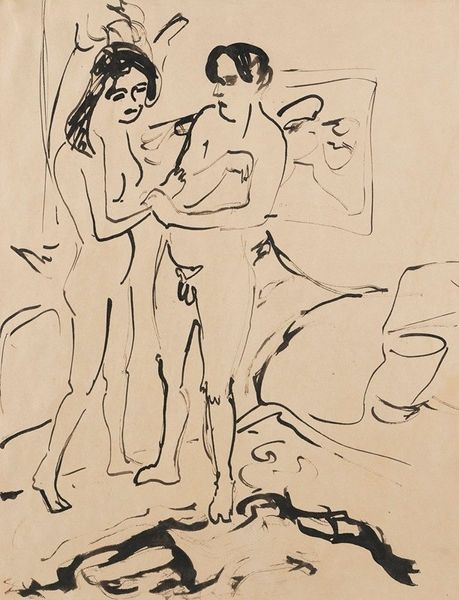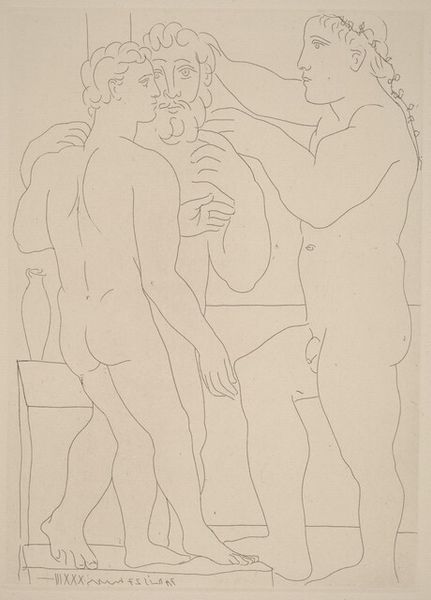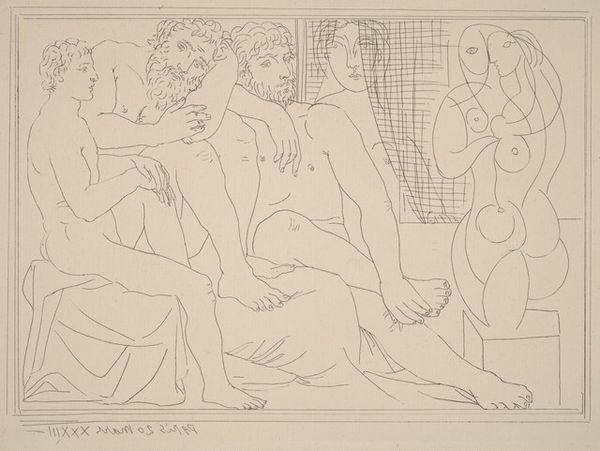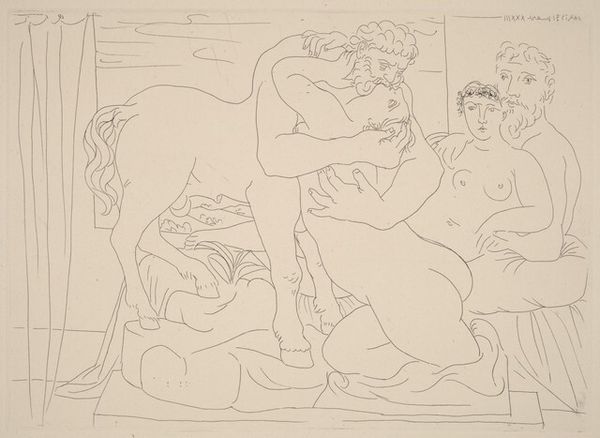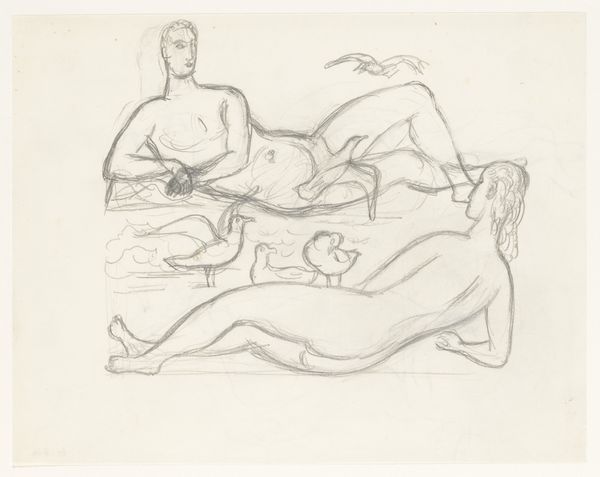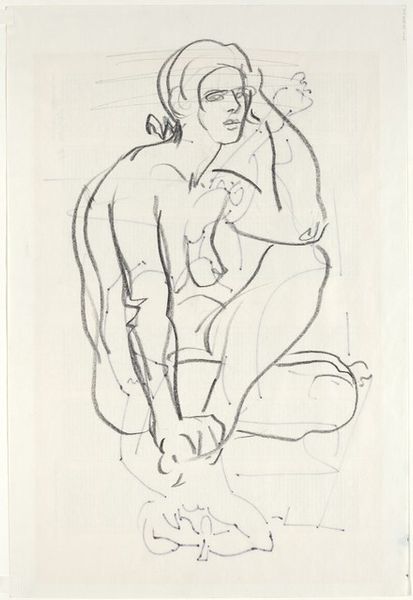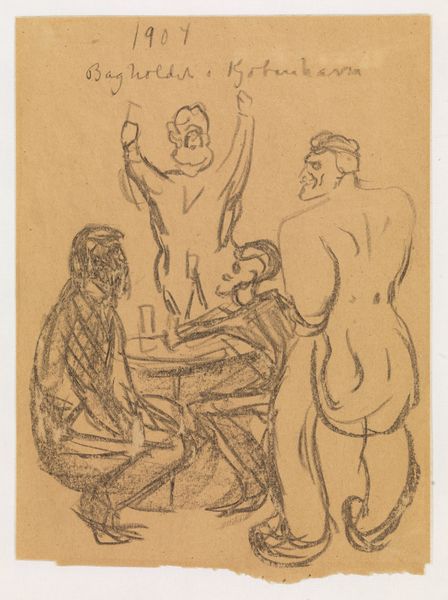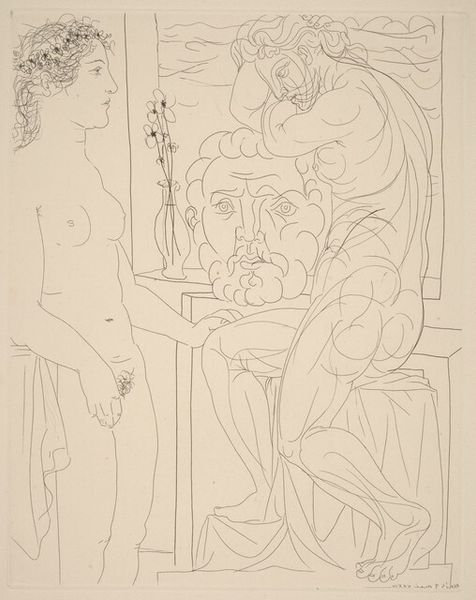
Sculptor, Model, and Sculpture (Sculpteur, modèle et sculpture: femme assise) 1933
0:00
0:00
drawing, print, etching, intaglio
#
portrait
#
drawing
#
cubism
# print
#
etching
#
intaglio
#
pencil sketch
#
figuration
#
line
#
portrait drawing
#
modernism
Dimensions: plate: 31.8 x 18.4 cm (12 1/2 x 7 1/4 in.) sheet: 50.2 x 38.8 cm (19 3/4 x 15 1/4 in.)
Copyright: National Gallery of Art: CC0 1.0
Editor: This is Picasso’s 1933 intaglio print, "Sculptor, Model, and Sculpture." The linear style feels immediate, like a sketch. What strikes me, though, is the almost claustrophobic, internalized gaze of the figures. What do you see in this piece? Curator: This etching, part of Picasso’s Vollard Suite, goes far beyond a simple depiction of an artist and his model. The image pulsates with power dynamics. Think about the historical context: male artist, female muse, objectified sculpture. The gaze of the figures you mentioned really embodies those hierarchies. Editor: So, are you saying that the apparent intimacy is actually a reflection of broader societal issues? Curator: Precisely. Picasso’s Cubist fracturing allows him to show the complex facets of desire, control, and the male gaze. He highlights the art historical trope of the passive female nude but through these jarring angles almost deconstructs its perceived traditional value. The woman as a fractured object for consumption, even? Editor: It's interesting that even with his modern style, those traditional power dynamics still emerge. I never thought about how art, even revolutionary art, can perpetuate problematic representations. Curator: It requires constant interrogation, doesn't it? Picasso wasn't immune to the biases of his time. How can we, as contemporary viewers, acknowledge and challenge such representations? That is what truly makes this image relevant. Editor: Seeing the work as more than just the beautiful image is a valuable reminder that art doesn't exist in a vacuum, does it? Thank you. Curator: Absolutely. The artwork becomes a place where cultural norms, historical issues and power relations get exposed. I am very happy to offer a different interpretation for our audience.
Comments
No comments
Be the first to comment and join the conversation on the ultimate creative platform.
